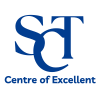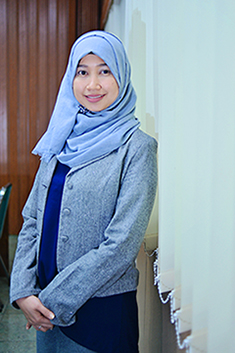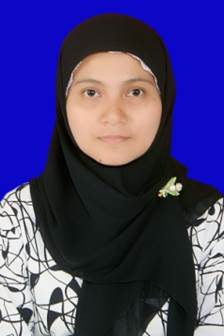Antimalarial Potential of Fraction 5 from Ethanolic Leaves Extract of Artocarpus Altilis
Downloads
Background: Artocarpus altilis leaf extract (AAL.E) was separated by VLC, and six fractions were obtained. Fraction 5 (AAL.E.5) showed antimalarial activity with an IC50 value of 3.71 µg/mL. Objective: This study aimed to determine the antimalarial activity of AAL.E.5 subfractions against P. falciparum, the mechanism of action against Plasmodium Falciparum Malate quinone oxidoreductase (PfMQO), and the active substances. Methods: The AAL.E.5 was separated by open-column chromatography and eluted with chloroform-methanol gradient elution in order of increasing polarity. The antimalarial activity of all subfractions was assessed using a lactate dehydrogenase (LDH) assay against P. falciparum and the mechanism of action of the PfMQO enzyme. The profiles of the most active subfractions were analyzed using High-Performance Liquid Chromatography (HPLC). Results: The separation of fraction 5 (AAL.E.5) yielded 11 subfractions (AAL.E.5.1–AAL.E.5.11). Screening antimalarial activity at 10 μg/mL in this subfraction showed that only five subfractions (AAL.E.5.6-AAL. E.5.10) inhibited P. falciparum and two subfractions (AAL.E.5.6 and AAL.E.5.10) inhibited the PfMQO enzyme. Only subfraction 6 (AAL.E.5.6) inhibited both, with IC50 values of 6.609 µg/mL and 20.34 µg/mL. The thin layer chromatography profile of AAL.E.5.6 revealed reddish-orange spots, indicating the presence of flavonoid compounds, and was also presumed from the UV-visible to HPLC chromatogram for band I in the 300 – 400 nm range and band II in the 240–285 nm range. Conclusion: Subfraction 6 has antimalarial activity against P. falciparum and is thought to have a mechanism of action in PfMQO. Based on the TLC, HPLC, and UV-Vis spectra, subfraction 6 was assumed to be a flavonoid.
Basco LK, Mitaku S, Skaltsounis AL, Ravelomanantsoa N, Tillequin F, Koch M, et al. (1994). In vitro activities of furoquinoline and acridone alkaloids against Plasmodium falciparum. Antimicrob Agents Chemother;38(5):1169–71
Berg, C.C. (1998). Flora Neotropica Monograph 83: Moreae, Artocarpae, and Dorstenia (Moraceae). The New York Botanical Garden. New York.
Boonphong, S., Baramee, A., Kittakoop, P & Puangsombat, P. (2007). Antitubercular and
Antiplasmodial prenylated flavones from the roots of Artocarpus altilis.
Chiang Mai J; 34; 339-344.
Bourjot, Melanie., Apel, Cecile., Therese, Marie, Martin., Grellier, Philippe., Nguyen, Van Hung, Françoise., Marc, Litaudon, Gueritte. (2010). Antiplasmodial, Antitrypanosomal, and Cytotoxic Activities of Prenylated Flavonoids Isolated from the Stem Bark of Artocarpus styracifolius. Planta Med; 76; 1600–1604.
Cui, L., Mharakurwa, S., Ndiaya, D.,Rathod, P and Rosenthal, P., 2015. Antimalarial drug resistance: Literature riview and activies and finding of the ICEMR network, Am. J. Trop. Med. Hyg. 93. p.57- 68.
Dolabela, MF., Oliveira, SG., Nascimento,JM., Peres, JM., Wagner,H and Póvoa, MM. (2008). In vitro antiplasmodial activity of extract and constituents from Esenbeckia febrifuga, a plant traditionally used to treat malaria in the Brazilian Amazon. Phytomedicine;15(5):367–72.
Direktorat Jenderal Pencegahan dan Pengendalian Penyakit. (2019). Profil Kesehatan Indonesia 2018. Kementerian Kesehatan Republik Indonesia. Jakarta; 229-235.
Hartuti, E. D., Inaoka, D. K., Komatsuya, K., Miyazaki, Y., Miller, R. J., Xinying, W., Sadikin, M., Prabandari, E. E., Waluyo, D., Kuroda, M., Amalia, E., Matsuo, Y., Nugroho, N. B., Saimoto, H., Pramisandi, A., Watanabe, Y.-I., Mori, M., Shiomi, K., Balogun, E. O & Kita, K. (2018). Biochemical studies of membrane bound Plasmodium falciparum mitochondrial L-malate:quinone oxidoreductase, a potential drug target. Biochimica et Biophysica Acta (BBA) – Bioenergetics;1859(3); 191–200. https://doi.org/10.1016/j.bbabio.2017.12.004
Fajriah, S., Mozef, T., Artanti, N., Lotulung, P.D.N & Abbas, J. (2013). Isolation of Prenylated Flavonoid from Ethyl Acetate Fraction of Artocarpus altilis Leaves using Counter-Current Chromatography. Asian Transactions on Basic and Applied Sciences; 02(06); 6–9.
Gwatidzo., Luke, Dzomba., Pamhidzai and Mangena., Mkululi. (2018). TLC separation and antioxidant activity of flavonoids from Carissa bispinosa, Ficus sycomorus, and Grewia bicolour fruits. Nutrire;43; 3. DOI 10.1186/s41110-018-0062-5
Hafid, A.F., Ariantari, N.P., Tumewu, L., Hidayati, A.R & Widyawaruyanti A. (2012). The active marker compound identification of Artocarpus champeden spreng stembark extract, morachacone a as antimalarial. Int J Pharm PharmSci; 4(5); 246 9.
Hafid, A.F., Septiani, R.P., Fabriana,, L.H., Febrianty, N., Ranggaditya, D., &
Widyawaruyanti, A. (2016). Antimalarial activity of crude extracts of
Artocarpus heterophyllus, Artoarpus altilis, and Artocarpus camansi. Asn J Pharma and Clinic Resch.;1(9); 279-281.
Hidayati, Rosmalina, Agriana. 2020. Uji Aktivitas Antimalaria. Disertasi. Surabaya: Universitas Airlangga
Hidayati, A. R., Melinda, Ilmi, H., Sakura, T., Sakaguchi, M., Ohmori, J., Hartuti, E. D., Tumewu, L., Inaoka, D. K., Tanjung, M., Yoshida, E., Tokumasu, F., Kita, K., Mori, M., Dobashi, K., Nozaki, T., Syafruddin, D., Hafid, A. F., Waluyo, D and Widyawaruyanti, A. (2023). Effect of geranylated dihydrochalcone from Artocarpus altilis leaves extract on Plasmodium falciparum ultrastructural changes and mitochondrial malate: Quinone oxidoreductase. International Journal for Parasitology: Drugs and Drug Resistance, 21, 40–50. https://doi.org/10.1016/j.ijpddr.2022.12.001
Hostettmann, K., Hostettmann, M. & Marston, A., (1995). Preparative Chromatography Techniques. Diterjemahkan oleh Kosasih Padmawinata. Penerbit ITB. Bandung ; 9-11.
Kinansi, Revi, Rosavika., Pratamawati, Diana, Andriyani & Mayasari, Rika. (2021). Treatment of Malaria in Urban and Rural Areas of Indonesia. BALABA; 17(02). DOI:10.22435/blb.v17i2.4443
Markham, K.R & Mabry, T.J. (1975). Ultraviolet-visible and Proton Magnetic Resonance Spectroscopy of flavonoids. The Flavonoids. Boston, MA: Springer.
Nguyen, T.T., Moon,Y.H., & Ryu,Y.B. (2013). The Influence of Flavonoid Compounds on The In Vitro Inhibition Study of a Human Fibroblast Collagenase Catalytic Domain Expressed in E. coli. Enzyme Microb Technol;52(1); 26-31.
Noronha, Monica., Pawar, Vishakha., Prajapati, Anil & Subramanian. R.B. (2019). A literature review on traditional herbal medicines for malaria. South African Journal of Botany 128.
Santos-Buelga, C., García-Viguera, C & Tomás-Barberán, F. A. (2003). Online identification of flavonoids by HPLC coupled to diode array detection. Pp. 92–127 in Methods in polyphenol analysis, eds. Santos-Buelga, C., Williamson, G., The Royal Society of Chemistry, Cambridge, UK
Sitohang, V., Sariwati, E., Fajariyani, S.B., Hwang, D., Kurnia, B & Hapsari, R.K. (2018). Comment Malaria elimination in Indonesia: halfway there. Lancet Glob Heal;6(6); 604–6.
Syah, YM., Juliawaty, LD., Achmad, SA., Hakim, EH & Ghisaberti EL. (2006). Cytotoxic prenylated flavones from Artocarpus champeden. J.Nat Med;60; 308-312
Tumewu, L., A'yun, L. Q., Ilmi, H., Hafid, A. F., & Widyawaruyanti, A. (2021). Artocarpus sericicarpus stem bark contains antimalarial substances against Plasmodium falciparum. Journal of Basic and Clinical Physiology and Pharmacology, 32(4), 853–858. https://doi.org/10.1515/jbcpp-2020-0397
Widyawaruyanti, A., Subehan, K.K, Surya, Awale, Suresh, Nindatu, Maria., N.C., Zaini, Syafruddin, Din., B.S.A, Puji, Tezuka, Yasuhiro & Kadota, Shigetoshi. (2007). New prenylated flavones from Artocarpus champeden, and their antimalarial activity in vitro. J Natural Med;61; 410-413
World Health Organization.World Malaria Report 2020; WHO: Geneva, Switzerland.
World Health Organization Malaria Team. 2019. World Malaria Report 2019. WHO. 232 p.
Dolabela MF, Oliveira SG, Nascimento JM, Peres JM, Wagner H, Póvoa MM, et al. In vitro antiplasmodial activity of extract and constituents from Esenbeckia febrifuga, a plant traditionally used to treat malaria in the Brazilian Amazon. Phytomedicine. 2008 May;15(5):367–72.
Copyright (c) 2023 JURNAL FARMASI DAN ILMU KEFARMASIAN INDONESIA

This work is licensed under a Creative Commons Attribution-NonCommercial-ShareAlike 4.0 International License.
1. The copyright of this journal belongs to the Editorial Board and Journal Manager with the author's knowledge, while the moral right of the publication belong to the author.
2. The formal legal aspect of journal publication accessibility refers to the Creative Commons Attribution-Non-Commercial-Share Alike (CC BY-NC-SA), which implies that the publication can be used for non-commercial purposes in its original form.
3. Every publication (print/electronic) is open access for educational, research, and library purposes. In addition to the objectives mentioned above, the editorial board is not responsible for copyright infringement


.jpg)















